Global Stock Market Crash
Meta Description
The global stock market crash, triggered by U.S. tariffs, has sent shockwaves across the global economy. Discover the causes, effects, and potential long-term consequences of this financial crisis.
Global Stock Market Crash Triggered by U.S. Tariffs: Impact on Global Economy in 2025

As you navigate the turbulent waters of the global economy in 2025, you find yourself at the epicenter of a financial storm. The imposition of sweeping U.S. tariffs has triggered a worldwide stock market crash, sending shockwaves through international trade and commerce. This seismic event has reshaped the economic landscape, leaving no country or industry untouched.
In this article, you will gain insight into the far-reaching consequences of this crisis, exploring how it has impacted various sectors, altered global power dynamics, and reshaped the future of international economic cooperation.
What Triggered the Global Stock Market Crash in 2025
Escalation of U.S. Tariffs

The global stock market crash of 2025 was primarily triggered by an unprecedented escalation of U.S. tariffs on imported goods. This protectionist move sent shockwaves through the interconnected global economy, disrupting supply chains and trade relationships that had been carefully cultivated over decades. The sudden imposition of these tariffs caught many investors and corporations off guard, leading to a rapid sell-off in global markets.
Global Economic Slowdown
The cumulative impact of these trade disputes resulted in a severe global economic slowdown. Key industries, particularly those reliant on international trade, experienced significant contractions. This economic deceleration further fueled market panic, as fears of a prolonged recession took hold. The interconnectedness of global financial markets meant that no major economy was immune to the fallout, contributing to the widespread nature of the stock market crash.
The Impact of the Global Stock Market Crash on the Economy
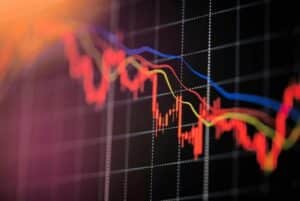
Widespread Economic Turmoil
The global stock market crash triggered by U.S. tariffs in 2025 has sent shockwaves through the world economy. As share prices plummet across major indices, the ripple effects are being felt far beyond Wall Street. Trillions of dollars in market value have been erased, leaving investors reeling and consumer confidence shaken to its core.
Corporate Fallout and Job Losses
With their market capitalizations slashed, many companies are facing severe financial strain. This has led to widespread cost-cutting measures, including mass layoffs and hiring freezes. Small businesses, often more vulnerable to economic downturns, are struggling to stay afloat amidst tightening credit conditions and reduced consumer spending.
Government Responses and Global Cooperation
Policymakers worldwide are scrambling to mitigate the economic fallout. Central banks are implementing emergency measures, slashing interest rates and injecting liquidity into financial markets. Meanwhile, governments are rolling out fiscal stimulus packages aimed at supporting businesses and workers. However, the efficacy of these interventions remains uncertain in the face of such a severe and sudden economic shock.
How the U.S.-China Trade Conflict Fueled the Global Stock Market Crash
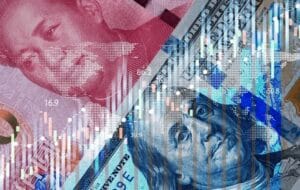
The escalating trade tensions between the United States and China played a pivotal role in triggering the global stock market crash of 2025. As the world’s two largest economies engaged in a protracted battle of tariffs and economic sanctions, the ripple effects reverberated across international financial markets.
Tariff Escalation and Market Uncertainty
The implementation of sweeping U.S. tariffs on Chinese imports sent shockwaves through global supply chains. Investors, wary of the potential for retaliatory measures and disrupted trade flows, began to retreat from equities en masse. This exodus of capital from stock markets worldwide precipitated a sharp decline in asset values across sectors.
Currency Volatility and Economic Slowdown
As the trade conflict intensified, both the U.S. dollar and Chinese yuan experienced significant fluctuations. This currency instability further eroded investor confidence and complicated international trade. Concurrently, the economic growth of both nations began to decelerate, with reduced consumer spending and business investment exacerbating the stock market’s downward spiral.
Global Contagion Effect
The interconnectedness of the global economy meant that the U.S.-China trade war’s impact was not confined to these two countries. As investor sentiment soured and economic indicators weakened, stock markets from Europe to Asia experienced substantial losses. This domino effect underscored the fragility of the global financial system in the face of geopolitical tensions between major economic powers.
Stock Market Volatility and Investor Panic in 2025
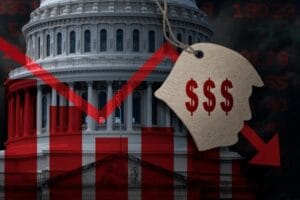
Market Turbulence Reaches Unprecedented Levels
As U.S. tariffs sent shockwaves through global stock market crash in 2025, stock exchanges worldwide experienced extreme volatility. The Dow Jones Industrial Average and S&P 500 saw daily swings of over 5%, while Asian and European markets mirrored this instability. This unprecedented turbulence left investors struggling to navigate an increasingly unpredictable financial landscape.
Mass Sell-Offs and Liquidity Concerns
Panic gripped investors as they rushed to offload risky assets, triggering widespread sell-offs across sectors. Blue-chip stocks, once considered safe havens, plummeted alongside speculative investments. This mass exodus from equities raised serious liquidity concerns, with some smaller exchanges temporarily halting trading to prevent further market freefall.
Long-Term Investment Strategies Upended
The market crash forced a reevaluation of long-held investment strategies. Buy-and-hold approaches, which had proven successful in previous decades, suddenly seemed perilous. Investors scrambled to diversify portfolios, seeking refuge in traditionally stable assets like gold and government bonds. However, even these “safe” options showed vulnerability in the face of global economic upheaval.
What’s Next After the Global Stock Market Crash?
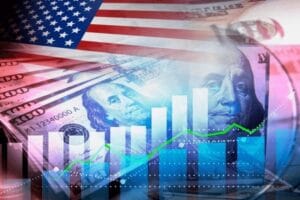
As the dust settles on the unprecedented global stock market crash triggered by U.S. tariffs, investors and economists are left wondering: what comes next? The road to recovery will undoubtedly be challenging, but there are several key areas to watch in the coming months.
Economic Stabilization Efforts
Governments and central banks worldwide are likely to implement aggressive monetary and fiscal policies to stabilize their economies. Expect to see interest rate cuts, quantitative easing measures, and stimulus packages aimed at boosting consumer spending and business investment. These efforts will be crucial in restoring confidence and liquidity to the markets.
Diplomatic Negotiations
The international community will need to engage in intense diplomatic negotiations to address the trade tensions that sparked this crisis. Watch for high-level meetings between U.S. and global leaders, as well as potential revisions to existing trade agreements. The outcome of these discussions will play a significant role in shaping the post-crash economic landscape.
Industry Restructuring
Many sectors will undergo significant restructuring in the wake of the crash. Companies may consolidate through mergers and acquisitions, while others may be forced to downsize or pivot their business models. This period of upheaval could lead to the emergence of new industry leaders and innovative business practices.
Investor Behavior Shifts
The crash will likely alter investor behavior for years to come. Look for a renewed focus on risk management, diversification, and defensive investment strategies. Additionally, there may be increased interest in alternative assets and emerging markets as investors seek new opportunities for growth and stability.
Conclusion
As you navigate the turbulent economic landscape of 2025, remain vigilant to the far-reaching consequences of the U.S. tariff-induced global stock market crash. The ripple effects will continue to shape international trade, corporate strategies, and fiscal policies for years to come. While challenges persist, opportunities for growth and innovation may emerge from this crisis. Stay informed, diversify your investments, and adapt your business practices to mitigate risks.
The global economy’s resilience will be tested, but with careful planning and international cooperation, recovery is possible.The Your decisions and actions in these uncertain times will play a crucial role in shaping the economic future for generations to come.

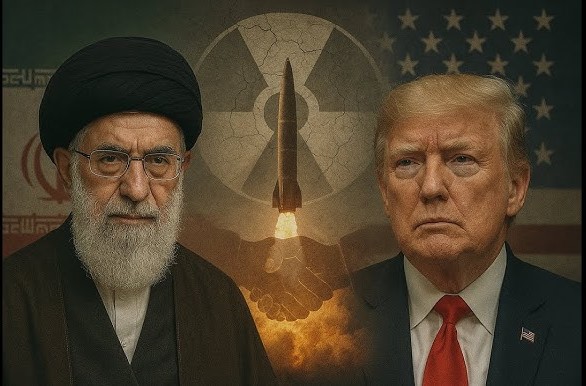

Your point of view caught my eye and was very interesting. Thanks. I have a question for you.